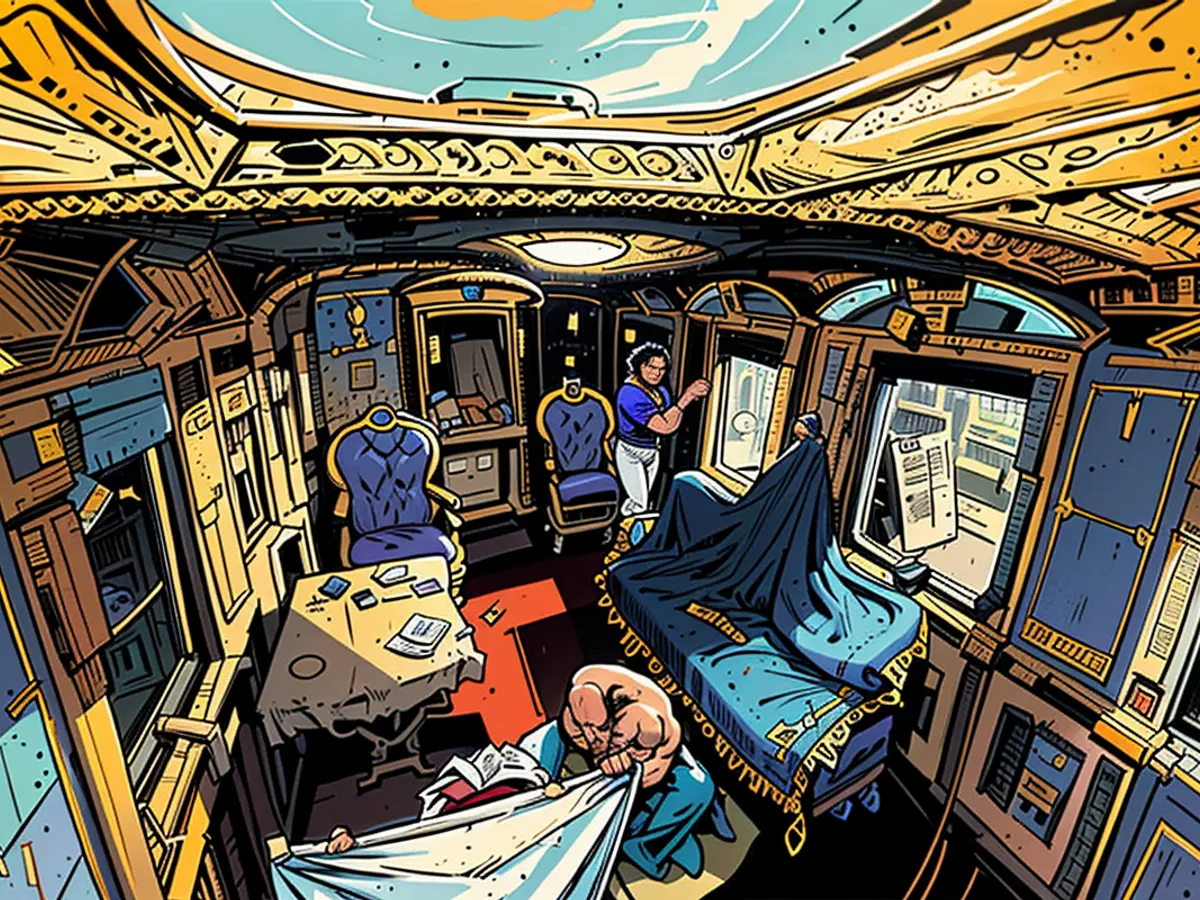The restored fairy-tale train of King Louis II is unveiled for spectators' viewing pleasure.
Bavarian King Ludwig II, famous for his iconic castles, also had a fancy for luxurious travel. In the 1860s, he ordered a rebuild of the Bavarian royal train, this time imitating the French Baroque style. Remnants of the lavish salon and terrace cars remain intact and can be marveled at at the DB Museum in Nuremberg. Currently, experts are working diligently to maintain and restore these precious relics, showcased during restoration.
Recent renovations have seen restorers gently scrub away layers of grime from the intricate gold ornaments on the cars, using specialized foam cleaners. Damaged upholstery, from chairs to even the lavatory seats, has been reinforced toprevent further deterioration due to moth holes or worn spots. Experts are now employing delicate brushes to touch up any blemishes on the furniture and the train's exterior, aiming to preserve the original charm while addressing necessary repairs.
As per Julia Richter, the restoration expert at the DB Museum, the focus is on preserving the substance while minimizing any potential intervention. The end result should maintain an aged appearance, reflecting the cars' historical worth. Completion of the project is expected within the next few days.
"A Rolling Dream Palace"
Ludwig II's salon car held the moniker of "Versailles on Wheels" according to museum expert Stefan Ebenfeld. The royal train was a palatial affair, consisting of eight cars painted Bavarian blue, four of which served for the royal entourage, staff, kitchen, and luggage.
When crafting the salon car, Ludwig II drew inspiration from his venerable counterpart, King Louis XIV of France, Ebenfeld clarifies. However, it's worth noting that the style references were already outdated by that time. Ludwig II's penchant for retreating into romantic fantasies had earned him the ominous title "Mad King."
The salon and terrace cars were transferred to the museum in Nuremberg after the annulment of the monarchy. During World War II, a bomb wreaked havoc on the museum building, recounts Richter. Following the bombing, looters pilfered paintings, furniture, and what appeared to be valuable items from the salon car. In the 1950s, the interiors were meticulously restored using historical drawings and sketches, shares the expert. Regrettably, the authentic relics were lost subsequent to that.
The Bavarian royal train, a marvel of the 1860s, was designed with a French Baroque influence, reflecting King Ludwig II's admiration for opulence. Visitors can still appreciate the original charm of the salon and terrace cars in the DB Museum in Nuremberg, which is located in the heart of Bavaria.






